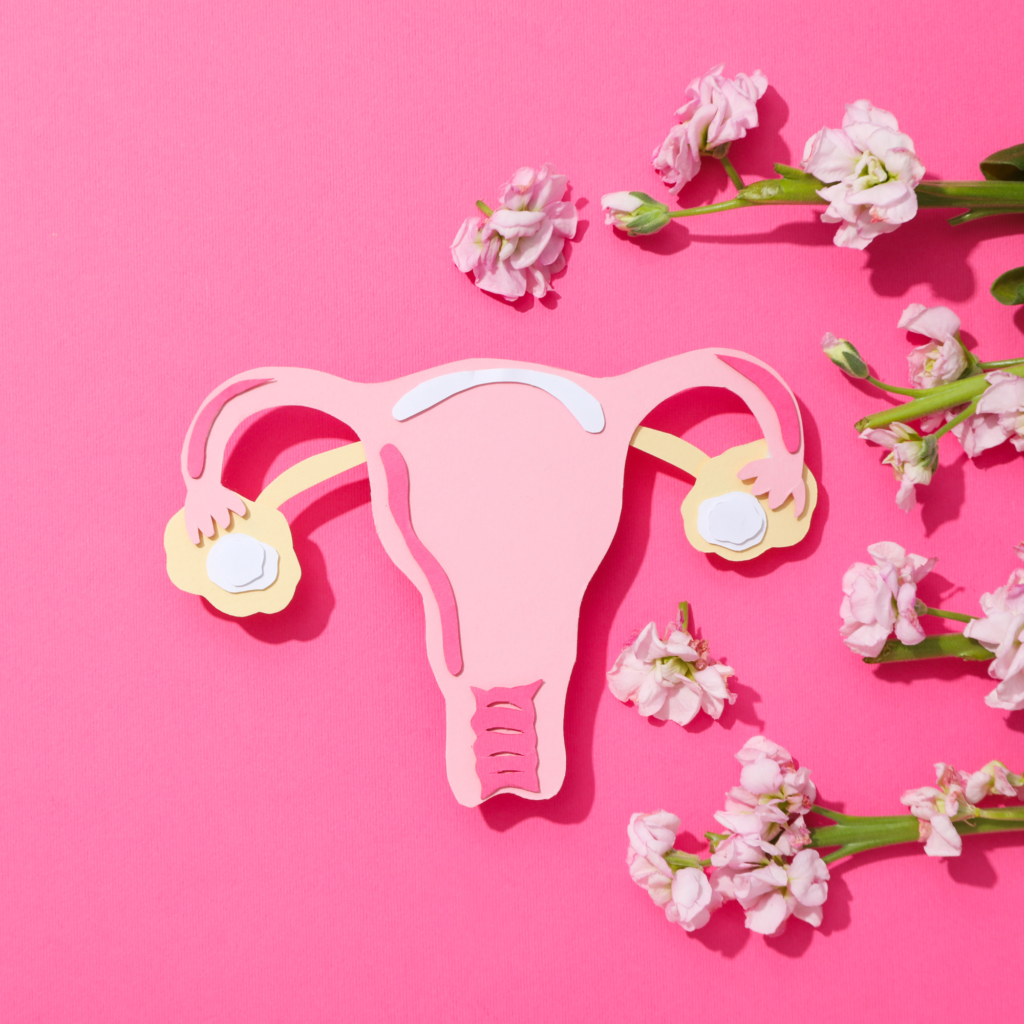Are you experiencing pain with sex? You’re not alone, and it’s more common than you might think. Understanding the causes and solutions can make a difference, so let’s immerse and explore how you can reclaim comfort and intimacy.

Key Takeaways
- Dyspareunia, or painful intercourse, affects both men and women but is more prevalent among women. It can stem from various physical and psychological factors, making it essential to identify the root cause for effective treatment.
- Common Physical Causes: Physical causes of pain during sex include vaginal dryness, endometriosis, pelvic inflammatory disease (PID), cysts or fibroids, and irritable bowel syndrome (IBS). Recognizing and treating these conditions can alleviate discomfort.
- Emotional factors such as anxiety, stress, a history of trauma, and inadequate sexual arousal can significantly contribute to pain during intercourse. Addressing these psychological aspects is crucial for effective treatment.
- Symptoms like lack of lubrication, bleeding after intercourse, difficulty urinating, recurrent vaginal infections, and pelvic pain are indicators that require attention. Consultation with a healthcare provider is vital for diagnosis and management.
- Treatment Options: Effective treatment options include addressing root causes, pelvic floor physical therapy, Botox injections, medications like topical estrogen, counseling, lifestyle changes, and laser therapy. Each approach targets specific needs, promoting overall sexual health.
- Experiment with lubricants, exploring different sexual positions, pelvic floor exercises, and incorporating natural anti-inflammatories can significantly reduce discomfort during intercourse. Topical estrogen therapy is also beneficial for managing symptoms related to decreased estrogen levels.
Table of Contents
Understanding Pain with Sex
Pain during intercourse can be distressing and impact your quality of life. Gaining insight into the causes helps in addressing the issue effectively.
What is Dyspareunia?
Dyspareunia, often referred to as painful intercourse, involves genital pain during or after sexual activity. This condition affects both genders but is more prevalent among women. Dyspareunia can stem from various physical or psychological factors, so identifying the root cause for appropriate treatment is essential.
Prevalence and Risk Factors
The prevalence of dyspareunia varies widely. Approximately 20% of women in the United States experience it at some point. Several risk factors contribute to this condition:
- Physical Causes: These include both entry pain and deep pain. Entry pain might result from insufficient lubrication, low estrogen levels, or inflammation. Deep pain might be due to endometriosis, pelvic inflammatory disease, or ovarian cysts. Notably, hormonal changes during menopause can reduce estrogen levels, affecting lubrication and elasticity.
In addition here are a few others to consider:
- Psychological Influences: Emotional factors such as anxiety, stress, or a history of trauma can also play a significant role. Sometimes, the anticipation of pain exacerbates the experience.
Understanding these aspects can aid in reducing discomfort and improving sexual health. Measures like consulting healthcare providers and exploring various therapies can offer practical solutions.
Common Causes
Pain during sex, also known as dyspareunia, stems from various physical and psychological factors. Addressing these causes helps improve sexual health and enjoyment. Here’s a breakdown of common causes:
Physical Causes
Vaginal Dryness
Hormonal changes like menopause or postpartum, stress, and lack of sexual arousal can lead to vaginal dryness. Soaps and certain medications may also contribute, making intercourse uncomfortable. It’s essential to identify and manage these aspects for relief.
Endometriosis
Endometriosis involves tissue similar to the uterine lining growing outside the uterus, resulting in deep pain during sex. This condition often necessitates medical intervention for effective indicator management and improved comfort during intercourse.
Pelvic Inflammatory Disease (PID)
PID, an infection of the reproductive organs, causes ongoing abdominal and pelvic pain. This discomfort can extend to sexual activities, making them unpleasant. Prompt and appropriate medical treatment is essential to manage symptoms and prevent further complications.
Cysts or Fibroids
Cysts or fibroids are abnormal growths within the reproductive organs that can lead to pain during sex, mainly if they are contacted during intercourse. Regular gynecological examinations can help detect these growths early and provide necessary treatments.
Irritable Bowel Syndrome (IBS)
IBS symptoms like constipation, diarrhea, stomach cramps, and bloating can make sex uncomfortable. Managing IBS with dietary changes and medications can alleviate some of the discomfort associated with sexual activities.
Psychosocial Factors
Psychosocial factors play a significant role in pain with sex. A history of abuse or not feeling safe can be root causes for some women. Additionally, engaging in sexual activities when one does not want to can lead to pain. Lack of sufficient foreplay or inadequate lubrication can also contribute to discomfort during intercourse. Identifying and addressing these underlying factors is crucial for effective treatment and healing.
For Help and Understanding with pain with sex as well as other causes of low libido, see how we support women just like you by checking out our masterclass.
Symptoms to Keep an Eye On
Lack of Lubrication
If lubricants don’t alleviate pain during sex, it might point to deeper issues like hormonal changes or vaginal dryness. Hormonal fluctuations, especially during menopause, can reduce natural lubrication, making intercourse uncomfortable.
Bleeding After Intercourse
Experiencing vaginal bleeding after sex should warrant a visit to your doctor. This indicator can indicate more severe conditions, including infections, cervical polyps, or certain cancers, and should be thoroughly evaluated.
Difficulty Urinating
Frequent or painful urination, along with urinary incontinence, often relates to vaginal atrophy, contributing to painful sex. This condition, common during menopause, leads to thinning and inflammation of vaginal walls, causing discomfort.
Vaginal Infections
Recurring vaginal infections, like yeast infections, can result in pain during intercourse. Symptoms might include itching, burning, and unusual discharge. Treating these infections promptly can alleviate discomfort and prevent future occurrences.
Pelvic Pain
Experiencing deep pain during sex can signal conditions such as endometriosis, pelvic inflammatory disease (PID), or fibroids. These conditions often involve inflammation or growth in pelvic areas, leading to significant discomfort.
Vaginal Tightness
Vaginal tightness or spasms, known medically as vaginismus, often cause pain during sex. This involuntary contraction of vaginal muscles can be a response to anxiety, fear, or past trauma, making penetration painful or impossible.
Diagnosis and Evaluation
Identifying the root causes of dyspareunia requires a structured approach. This section covers the essential steps involved in diagnosing and evaluating pain during sex.
Pelvic Examination
Your healthcare provider will start with a thorough pelvic examination. This procedure includes a visual inspection of your genital area to spot any visible abnormalities. Next, a speculum examination allows the provider to look inside your vagina and cervix for signs of infection or other issues.
They may also perform a bimanual examination, where two fingers are inserted into the vagina while pressing on the abdomen with the other hand. This technique helps identify tenderness, lumps, or abnormalities in the uterus and ovaries. For conditions such as vulvodynia, vaginismus, or vaginal atrophy, this detailed examination is essential.
Patient History
Collecting a comprehensive patient history is imperative to accurately diagnosing dyspareunia. Your healthcare provider will inquire about your pain’s onset, duration, and intensity. They’ll ask whether the pain occurs during entry or deep penetration and if you experience any associated symptoms like burning or itching.
Lifestyle factors like stress levels and relationship dynamics will also be discussed. It’s essential to mention any past trauma, as emotional factors can significantly contribute to pain during sex. Understanding your overall medical history, including any hormonal changes or infections, helps pinpoint the exact cause of your discomfort.
Tailored Treatment Approaches
Addressing pain with sex through targeted methods can significantly improve your quality of life. Each option addresses a specific need, ensuring comprehensive care.

Addressing Root Causes
Perhaps the most critical aspect of treatment is identifying and addressing the root causes of pain with sex. This may involve a comprehensive evaluation of an individual’s medical history, lifestyle, and more. The mental-emotional component is essential as well. If you have trauma or are feeling unsafe in any way, this can lead to pain with sex. Often, in these scenarios, we may find ourselves dissociating during sexual encounters. If this happens, your body may be stimulating a stress response, which, for many women, can lead to a lack of responsiveness and lubrication in their genitals as well as pain.
Pelvic Floor Physical Therapy
Pelvic floor physical therapy offers essential benefits for alleviating pain with sex. Techniques include biofeedback, dilators, electrical stimulation, and multidisciplinary approaches. Physical therapy can relax pelvic floor muscles, retrain pain receptors, and enhance sexual function.
Botox Injections
In some cases, Botox injections into the pelvic floor muscles can help relax the muscles and relieve pain. This approach may be particularly beneficial for individuals with musculoskeletal issues contributing to dyspareunia or vulvodynia.
Medications
Certain medications play a pivotal role in treating dyspareunia. Topical estrogen, applied directly to the vagina, treats lubrication issues. Prasterone, a capsule placed inside the vagina daily, also alleviates dyspareunia by enhancing vaginal health.
Counseling
Counseling addresses emotional issues contributing to pain with sex. Trauma, sexual abuse, or low self-esteem can impact your sexual experience. Counseling improves communication with your partner, restoring intimacy and paving the way for a healthier sexual relationship.
Lifestyle Changes
Lifestyle changes can mitigate pain during sex. Adopting a slower pace during intercourse, using lubricants to reduce friction, and communicating with your partner about preferences can make a significant difference in comfort.
Laser Therapy
Laser therapy can address vaginal dryness and atrophy, common factors in dyspareunia. This therapy rejuvenates vaginal tissue, easing discomfort and improving sexual function.
Pelvic Floor Physical Therapy
Pelvic floor physical therapy is a crucial adjunct to most treatments for pain with sex. It involves biofeedback, dilators, electrical stimulation, education, and multidisciplinary approaches. Physical therapy can help relax the pelvic floor muscles, retrain pain receptors, and improve sexual function.
Natural Anti-Inflammatories
Incorporate natural anti-inflammatories into your treatment plan. These agents reduce inflammation and alleviate pain, providing a holistic approach to managing dyspareunia.
Carry out these treatment options to effectively manage pain with sex and enhance your overall well-being. Each approach offers unique benefits, ensuring a comprehensive, personalized treatment plan.
Other Treatments
Pain during sex, or dyspareunia, can be alleviated through various treatments. By understanding and addressing the root causes, you can find relief and improve your quality of life.
Self-care and Home Remedies
Simple self-care measures can significantly reduce discomfort. For instance, using lube during intercourse can alleviate dryness and ease penetration. Exploring different sexual positions might minimize pressure and pain. Regular pelvic floor exercises, such as Kegels, can strengthen vaginal muscles, increasing flexibility and reducing discomfort. Also, using warm compresses before sexual activity can relax muscles and lower pain levels.
Natural Anti-inflammatories

Specific natural anti-inflammatory agents may help reduce inflammation and alleviate pain. These can be used as part of a comprehensive treatment plan for pain with sex. Omega-3 fatty acids can reduce inflammation and are found in fish like salmon, walnuts, and flaxseeds. Turmeric, containing curcumin, has potent anti-inflammatory properties. Incorporating ginger and green tea into your daily routine can further boost your anti-inflammatory intake.
Topical Estrogen Therapy
Vulvovaginal atrophy, caused by decreased levels of estrogen, is a common issue in aging women. Topical estrogen therapy can help restore normal vaginal pH levels, increase cell numbers, and promote revascularization of the epithelium. This can alleviate dryness and dyspareunia in these cases. Topical DHEA therapy can help as well. Before starting treatments like this, it is advisable to get your hormone levels checked as well as throughout treatment. In addition, natural versions of hormone therapies can work well for many women and can cause fewer side effects.
Pain during sex doesn’t have to be endured. Explore these treatments under medical guidance to find the best solution for your needs.
Wrapping Up
Pain during sex doesn’t have to be a permanent part of your life. You’re taking crucial steps toward reclaiming your intimate life by understanding the causes, recognizing symptoms, and exploring various treatment options. Remember, this journey is uniquely yours; what works for one person may not work for another. As you navigate this path, embrace open communication with your partner, and don’t hesitate to seek professional support when needed.
References:
Graziottin, A. (2008). Dyspareunia and vaginismus: Review of the literature and treatment. Current Sexual Health Reports, 5, 43-50. https://doi.org/10.1007/S11930-008-0008-7.
Labrie, F., Archer, D., Koltun, W., Vachon, A., Young, D., Frenette, L., Portman, D., Montesino, M., Côté, I., Parent, J., Lavoie, L., Beauregard, A., Martel, C., Vaillancourt, M., Balser, J., & Moyneur, É. (2016). Efficacy of intravaginal dehydroepiandrosterone (DHEA) on moderate to severe dyspareunia and vaginal dryness, symptoms of vulvovaginal atrophy, and of the genitourinary syndrome of menopause. Menopause, 23, 243–256. https://doi.org/10.1097/GME.0000000000000571.




